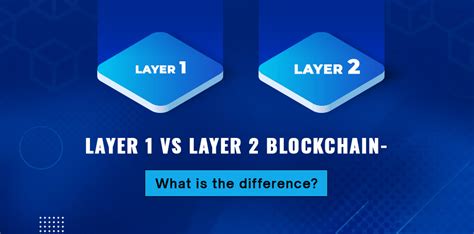Title: Understanding Cryptocurrency: An In-Depth Look at Layer 1 Solutions
Introduction
The world of cryptocurrencies has come a long way since its inception in the early 2000s. Today, Bitcoin and other major cryptocurrencies have become a staple of modern finance, with many countries and institutions increasingly embracing digital currencies as an alternative to traditional fiat currencies. However, behind every successful cryptocurrency is a complex system that enables transactions without the need for intermediaries, secure decentralized networks, and more efficient processes. This article will delve into the world of layer 1 solutions – the fundamental building blocks of cryptocurrency networks.
What are Layer 1 Solutions?
Layer 1 solutions refer to the underlying technology that enables cryptocurrencies to operate. These solutions provide the foundation for a decentralized network, allowing users to send, receive, and store digital assets without relying on traditional payment processors or central banks. The most critical layer 1 solution is the blockchain, which consists of a public ledger that records transactions across a network.
The blockchain provides several key benefits:
- Decentralization: A decentralized network allows for peer-to-peer transactions without the need for intermediaries.
- Security: The use of cryptographic techniques ensures that transactions are secure and tamper-proof.
- Transparency: All transactions on the blockchain are recorded in a public ledger, allowing for transparency and accountability.
Types of Layer 1 Solutions
There are several types of layer 1 solutions used in cryptocurrencies:
- Blockchain (Blockchain Network): A decentralized network that enables secure and transparent transactions across multiple nodes.
- Consensus Algorithms: These algorithms ensure the integrity and security of the blockchain by validating transactions from a set of trusted nodes.
- Cryptography
: The use of cryptographic techniques, such as encryption and digital signatures, to secure transactions on the blockchain.
Cryptographic Techniques
The use of cryptographic techniques is essential for securing transactions on the blockchain. Some common cryptographic techniques used in cryptocurrency include:
- Public-Key Encryption (PKE): A method of encrypting data using a pair of keys – public and private.
- Digital Signatures: Used to verify the authenticity and integrity of transactions.
Example Use Cases
Layer 1 solutions are not just limited to cryptocurrencies. They can be used in various other applications, such as:
- Smart Contracts: Self-executing contracts with the terms of the agreement written directly into lines of code.
- Decentralized Finance (DeFi): A community-driven platform for lending, borrowing, and trading digital assets.
- Supply Chain Management: Automating the tracking and verification of goods during the supply chain process.
Conclusion

Layer 1 solutions are the backbone of cryptocurrency networks, providing a secure, transparent, and decentralized way to facilitate transactions. Understanding these fundamental building blocks is essential for anyone looking to explore the world of cryptocurrencies. By examining the different types of layer 1 solutions and their applications, it becomes clear that cryptography plays a critical role in securing transactions on blockchain networks.
Future Developments
As the cryptocurrency landscape continues to evolve, new layer 1 solution technologies are being developed to improve scalability, security, and usability. Some potential future developments include:
- Sidechains: A mechanism for enabling interoperability between different blockchain networks.
